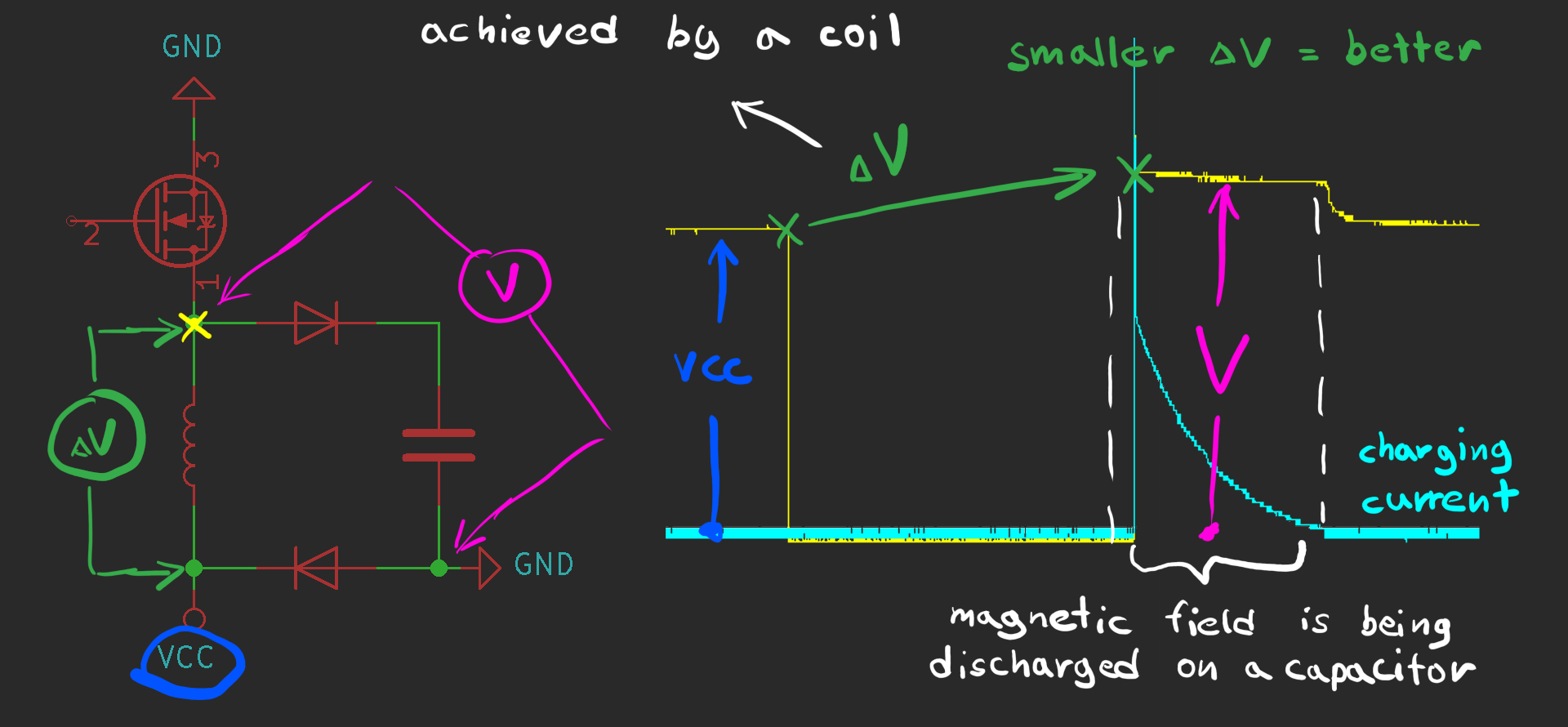In previous update I said, that if fast charging of field is impossible for now, I gonna try to find a way how to slow down discharge rate. I found one, so here it is.
Interaction between a coil and a capacitor is kinda interesting one: coil itself tries to sustain current by any means and current is an amount of charge moving through wire each second, however energy needed to move one electron differs depending on your setup! It can be small, it can be large, and while you have limited amount of electromagnetic energy - it makes a difference.
For example, if you have 40J in a magnetic field and each electron takes 0.5J to move through your coil, you can move only 80 electrons in total, with current in mind it dictates coil discharge duration. Let's say, that we need to increase that. One way to do it is to use bulky coil (with greater inductance), with same current flowing it would have more energy, not a great option though - it will increase cost and make coil more inert. Second, neat way, is to tweak amount of energy each electron takes to move - this is where capacitors come to play.
First of all, where this energy comes from? It comes from voltage. Electron would move himself from negative (overpopulated by electrons) to positive (desert) side without need in external force, as it seeks lower energy state, but opposite is unnatural and some effort is needed. When you charge a capacitor - you move electrons in unnatural direction, where voltage is Q/C. Bigger capacitance means, that you can move more electrons without significant rise of voltage and therefore - less energy used to move same charge. That's how you can discharge same electromagnetic energy with same current longer and that's what we see in LC circuits, where period of oscillations is somewhat proportional to C.
So... Can we simply increase capacitance? Of course we can, but there are much more elegant approach to that, which I found today! Let's nickname it... Battery-handled discharge.
 What we can see there is pretty interesting. Ground and MOSFET at the top are used to charge coil. VCC is connected all the time, pre-charges capacitor to a power supply level. Right after ground is disconnected, coil charge capacitor and... does it in unusual manner! Electrons from capacitor's top plate are forced through coil, but not to the ground level - to the VCC level instead. It gives us really shallow potential difference (dV) and we win loooong discharge time! Other part of potential difference is handled by a power supply, while it tries to remain positive : )
What we can see there is pretty interesting. Ground and MOSFET at the top are used to charge coil. VCC is connected all the time, pre-charges capacitor to a power supply level. Right after ground is disconnected, coil charge capacitor and... does it in unusual manner! Electrons from capacitor's top plate are forced through coil, but not to the ground level - to the VCC level instead. It gives us really shallow potential difference (dV) and we win loooong discharge time! Other part of potential difference is handled by a power supply, while it tries to remain positive : )Here you can see how energy needed to move charge (aka dV) affects discharge time:
How effective it is? From previous theoretical updates: field charging process becomes very-very ineffective as it goes, so I tested it with a reduced charging time:
 As you can see, goal "discharge time > charge time" was achieved much more easily this way, without significant loss of current. And theoretically - there is a room for improvement!
As you can see, goal "discharge time > charge time" was achieved much more easily this way, without significant loss of current. And theoretically - there is a room for improvement! Currently, there are only one limiting factor - voltage drop on a diode. That's a voltage drop, which cannot be defeated and great amounts of energy are wasted there, that limits discharge time. Maybe it's possible to replace it with another MOSFET, but I'm not sure for now.
And last thing - what about efficiency? Is it bad, that power supply handles something? Really, nothing to worry about! All that energy goes to charge a capacitor, so it can be reused, obviously. It's not something, what is dissipated in form of heat : )
P.S. Would be sweet to find a way to charge field faster, as I tried previously. But all that made me think: if slow discharge equals low voltage, doesn't that mean, that fast charge would always be a high voltage? Is it really possible to achieve it other way?
 CapitanVeshdoki
CapitanVeshdoki
Discussions
Become a Hackaday.io Member
Create an account to leave a comment. Already have an account? Log In.